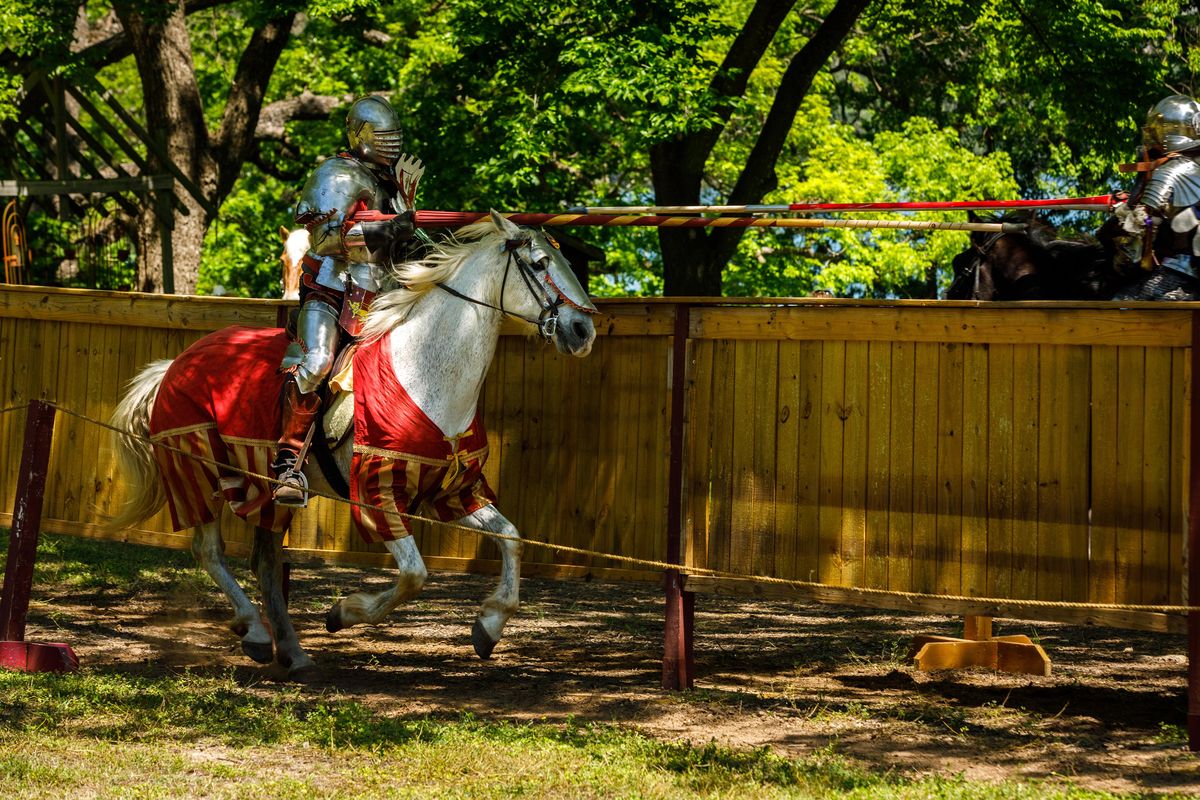The right steed for the deed: Tieg Thornton thrusts himself atop jousting stage

Tieg Thornton of Spokane started riding around age 6 and now has earned the title of international jousting champion.
The Lysts at the Lake is a world-class medieval arts competition sanctioned by the International Jousting League and International Jousting Association. It was held April 28-29 at Village of Castleton in Austin, Texas.
The 14th annual tournament has over the years included jousters from France, Germany, England, Australia, Belgium and Norway, according to event organizer Steve Hemphill, a member of the league’s board of representatives. Competitors have to be members of the league and certified level one or two riders.
The 29-year-old Thornton is a level two rider, and this was his first time to enter the tournament.
He took first place with 130 points, a victory by one point.
“It gives him the bragging rights of winning the largest jousting tournament around the world,” Hemphill said.

The tournament had three equestrian events held over three days. La chasse is the hunt held on an obstacle-filled course with quarry. Melee a’ cheval is an individual fight competition with tournament batons. Joust a’plaisance is the well-anticipated mounted equestrian jousting.
As a historic jousting, competitors must closely follow historic manuals down to distinguished French titles. They could earn points not only from the competitive events, but also for dignity and etiquette, equipment requirements and safety, and proper chivalry.
The hunting course in the first event, la Chasse, contained obstacles and quarry including a boar, a hart, hounds, a village, tavern, bridge, falcon, a hedge and a lady of honor in the castle. A jouster from Preston, Washington, Robert Odekirk, placed first in the event.
In the second event, melee a’cheval, or combat on horseback, competitors used tournament batons for weapons. Defeat involved the number of blows, dismounting and weapon loss or breakage.
The final and most popular event, joust a’plaisance, pitted two lance-carrying opponents on horseback attempting to strike one another.
Each competitor wore a small wooden shield, an ecranche, which functions as the target. Thornton’s was painted with his heraldry, along with his motto, “Never oppress or be oppressed.”
The most points were earned for a strike to the shield that broke the tip of the lance. Thornton’s best event was the joust, which he won by four points. His combined score advanced him to the semifinal and final rounds, from which he emerged as overall tournament champion.
Historically, jousting was the extreme sport of the elite, performed by kings, nobles and knights. It involved horsemanship, tactics and accuracy, which helped keep them in shape for war. Unlike most other combat-based sports, there is no defense.
“It’s all offense,” Thornton said. “You know you’re going to get hit. If you don’t present your shield, you don’t get points, so I just have to go in there and worry about my technique.”
The jousting competition is nothing if not for a well-trained horse. Thornton rode his own horse, Shepard.
Organizer Hemphill said 95% of jousting is dependent on the horse, along with excellent riding skills, and 5% on hitting the other person’s shield – a dinner plate-sized target.
“Getting your horse to charge past another horse at 25 miles per hour is so hard,” he said. “Tieg’s horse was a solid, excellently trained platform – 100% consistent – very impressive.”
Thorton credits his success to practicing year-round, having his own crew, and most of all, Shepard. Many who travel great distances to the tournament must borrow a horse.
Thornton said the drive from Spokane to Austin with a horse was challenging. They needed to stop every few hours to let Shepard out of the trailer. Shepard, a quarter-percheron, quarter-Andalusian and half-Hungarian warm blood horse, has been jousting for six years.
“Shep” did his job very well, Thornton said.